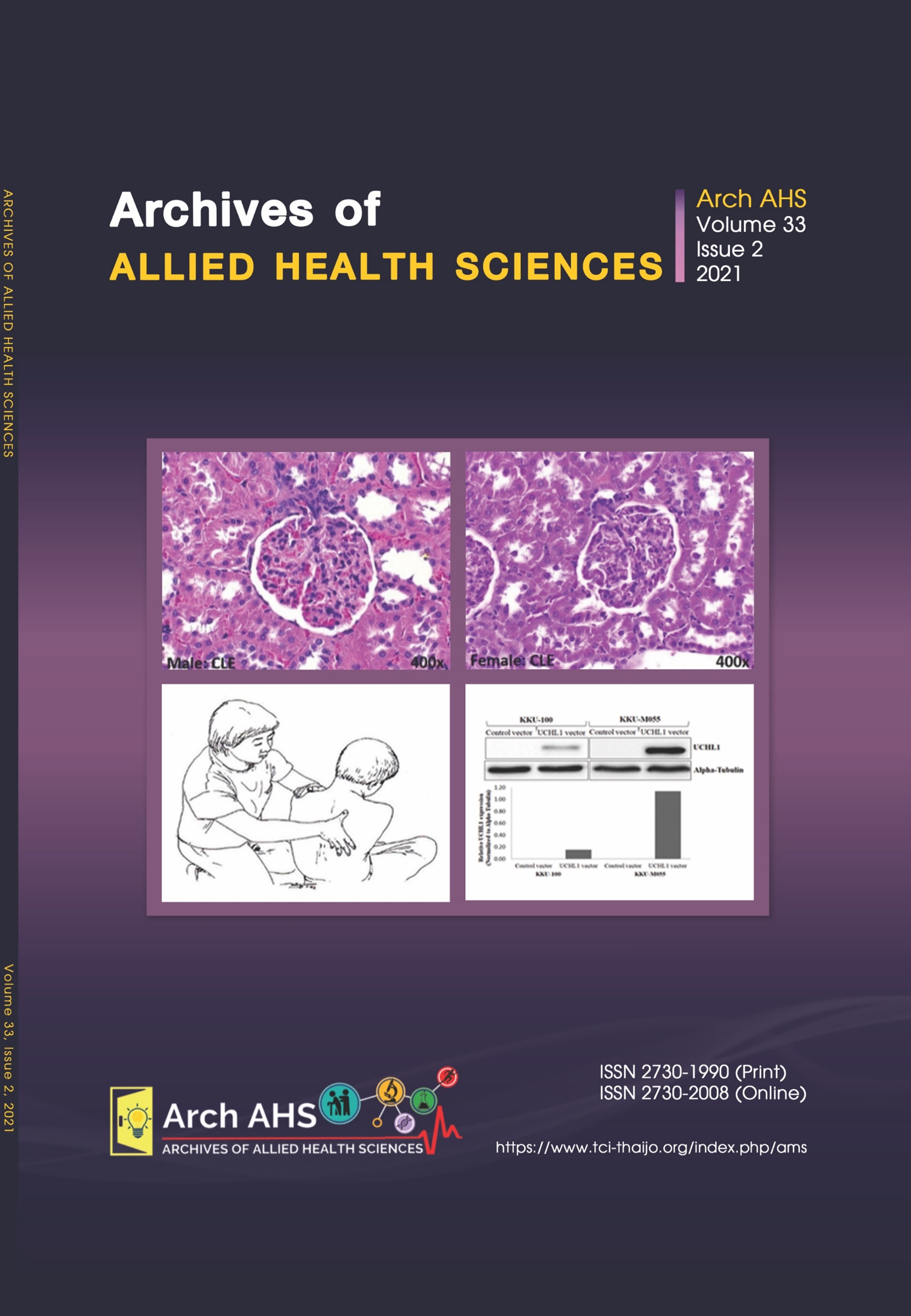Reduction of need for repeat chest x-rays caused by insufficient inspiration through enhanced patient communication
Main Article Content
Abstract
This two-phased study first (phase 1) explored the effect of patient age and gender on the repeat rate of chest x-ray examinations due to inadequate inspiration. In phase 2, we sought to reduce this rate using an instructive video to improve patient understanding of the chest examination. In phase 1, the analysis included a total of 12,905 radiographic images from all types of examinations from a 3-month period collected retrospectively. These included 1,484 repeated images which gave a total repeat rate of 11.2%. The highest proportion of repeated images were chest examinations (29.7%). Of the chest examinations, with a repeat rate of 10.0%, inadequate inspiration was the major reason (76.3%) for repeating the exam. Our analysis of these repeated examinations showed that there was a positive association between increased repeat procedures caused by inadequate inspiration and patient age (more than 40 years). In phase 2, we designed and provided an instructive video about chest x-ray examinations. We found that its use was associated with a significant reduction in the repeat rate due to inadequate inspiration among patients aged 41-60 years. Effective communication is an important role of healthcare providers and can improve the quality of medical services.
Article Details

This work is licensed under a Creative Commons Attribution-NonCommercial-NoDerivatives 4.0 International License.
References
Papp J. Quality management in the imaging sciences. 4th ed. St. Louis: Mosby Elsevier; 2011.
Foos DH, Sehnert WJ, Reiner B, Siegel EL, Segal A, Waldman DL. Digital radiography reject analysis: data collection methodology, results, and recommendations from an indepth investigation at two hospitals. J Digit Imaging 2009; 22(1): 89-98.
Andersen ER, Jorde J, Taoussi N, Yaqoob SH, Konst B, Seierstad T. Reject analysis in direct digital radiography. Acta Radiol 2012; 53(2): 174-8.
Owusu BJ, Darko EO, Hasford F, Addison EK, Asirifi JO. Film reject analysis and image quality in diagnostic Radiology Department of a Teaching hospital in Ghana. J Radiat Res Appl Sci 2014; 7(4): 589-94.
Little KJ, Reiser I, Liu L, Kinsey T, Sánchez AA, Haas K, et al. Unified database for rejected image analysis across multiple vendors in radiography. J Am Coll Radiol 2017; 14(2): 208-16.
Atkinson S, Neep M, Starkey D. Reject rate analysis in digital radiography: an Australian emergency imaging department case study. J Med Radiat Sci 2020; 67(1): 72-9.
Jones AK, Heintz, P, Geiser W, Goldman L, Jerjian K, Martin M, et al. Ongoing quality control in digital radiography: Report of AAPM Imaging Physics Committee Task Group 151. Med. Phys 2015; 42: 6658-70.
Lin CS, Chan PC, Huang KH, Lu CF, Chen YF, Lin Chen YO. Guidelines for reducing image retakes of general digital radiography. Advances in Mechanical Engineering 2016; 8(4): 1-6.
Itri JN. Patient-centered Radiology. RadioGraphics 2015; 35(6): 1835-46.
DeVoe JE, Wallace LS, Fryer GE, Jr. Patient age influences perceptions about health care communication. Fam Med 2009; 41(2): 126-33.
Peck BM. Age-related differences in doctorpatient interaction and patient satisfaction. Curr Gerontol Geriatr Res 2011; 2011: 137492.
Gossner J, Nau R. Geriatric chest imaging: when and how to image the elderly lung, age-related changes, and common pathologies. Radiol Res Pract 2013; 2013: 1-9.


